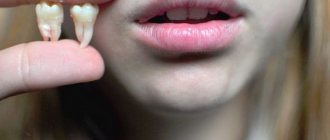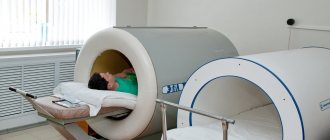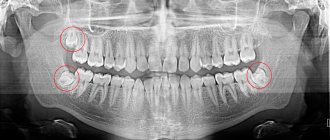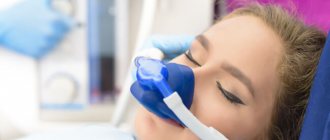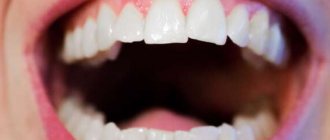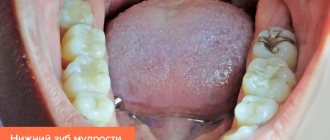Every person experiences tooth extraction sooner or later. The first experience was with baby teeth, but, as a rule, no problems arise with them, and they fall out safely even without medical assistance. But with permanent teeth the situation is different. Due to their complex root system, it is sometimes very difficult to remove them, and various additional techniques have to be used. Fortunately, modern dentistry has a whole range of modern methods that are low-traumatic and allow you to cope with even the most complex cases.
What are the indications for tooth extraction?
Tooth extraction in dentistry is always a last resort procedure. Doctors make every effort to save the tooth or at least part of it, but in some cases extraction cannot be avoided. We are talking about many conditions.
- Chronic periodontitis, which is in the acute stage. As a rule, if the inflammatory process continues to recur, it is recommended to remove the tooth to prevent further spread of the infection.
- Very strong and deep carious lesion of the tooth.
- Odontogenic osteomyelitis, which usually develops as a complication of infection and is characterized by damage to bone tissue.
- The tooth constantly injures soft tissues. This happens especially often if the tooth is in an incorrect position. Permanent trauma is very dangerous, therefore, if the problem cannot be solved in another way, removal is recommended.
- Fracture of a tooth root or any other mechanical damage.
- Late stages of periodontitis, when the teeth begin to become very loose.
- An impacted tooth that cannot erupt and is covered on top by gum tissue. Most often this happens with wisdom teeth.
- Carrying out orthopedic treatment or prosthetics that cannot be done without removing one or more teeth.
When is the best time to remove a wisdom tooth?
It is better to remove a wisdom tooth when it does not hurt!
Are you faced with the fact that the doctor recommended that you remove a wisdom tooth on the upper or lower jaw? Most likely there are certain indications for this.
Any surgical intervention during a period of acute inflammatory process occurs and is tolerated more difficult than during a period of relative rest. The healing period in such cases is more painful and longer.
Therefore, do not wait until the tooth hurts (IT WILL DEFINITELY HURT).
If you doubt or don’t trust a doctor, consult another one; if you have doubts, consult a third one.
Contraindications to tooth extraction
Of course, if the situation is urgent and tooth extraction is inevitable, the doctor will perform the procedure immediately after the patient seeks help. But if the operation is planned, then in some cases it is recommended to refrain from it. Contraindications include the following conditions:
- acute viral disease, pneumonia;
- oncology;
- some blood diseases;
- recent myocardial infarction;
- tumors and other lesions in the oral cavity.
In addition, tooth extraction is a procedure undesirable for pregnant women. But if it cannot be avoided, then doctors recommend, if possible, to carry it out in the second semester.
Indications for removal of all teeth
Dentists recommend complete tooth extraction in very rare cases. This is usually caused by periodontal disease, which is characterized by excessive mobility of the teeth. Also, all teeth must be removed before orthopedic treatment.
With periodontal disease, doctors remove all teeth if they begin to move in all planes, i.e. with periodontal disease of the 3rd degree.
Complete removal of teeth for orthopedic reasons is carried out before installing removable dentures and before restoring the integrity of the dentition using dental implantation.
Preparing for tooth extraction
For many people, tooth extraction is a very unpleasant and even frightening procedure. In fact, such fears are a consequence of those times when this manipulation was done without anesthesia using rough instruments. Today dentistry has stepped far forward, so removal takes place in much more comfortable conditions. You should not be afraid of the procedure, because the right psychological attitude is also one of the important conditions for the success of the operation.
To ensure that no incidents occur during tooth extraction, you must inform the surgeon about your state of health. If you have allergies, chronic or acute illnesses, be sure to tell your doctor. The same goes for the medications you take. Avoiding complications will also help avoiding alcohol and cigarettes the day before the procedure.
It is important to remember that you will not be able to eat or drink for some time after tooth extraction. Therefore, it is recommended to eat well before the procedure.
Anesthesia for tooth extraction
Tooth extraction is a rather painful procedure, so it is almost never performed without anesthesia. The exception is people with allergies to anesthetic drugs. Most often, when extracting teeth, local anesthesia is used using an injection. Usually we are talking about the so-called conduction anesthesia, which is injected directly into the nerve and has an increased concentration of the active substance. Naropin, ultracaine, ubistezin, etc. are used as the latter.
In addition to local anesthesia, general anesthesia may also be used during tooth extraction. Today, sedation is the most popular. This is a procedure in which the patient is given a strong sedative. He is in fact conscious, but does not feel pain and remains as if in a dream. Anesthesia is a more serious procedure that involves complete loss of consciousness, which in turn entails a longer recovery period.
General anesthesia for tooth extraction is used if the patient is intolerant to drugs for local anesthesia. In addition, it is used if a person has mental disorders, as well as if he experiences severe fear of the procedure. It is also justified if several teeth are to be removed at the same time. For example, sedation is often used when wisdom teeth are extracted. The procedure is done under the supervision of an anesthesiologist. Before the manipulation, the patient undergoes tests, performs a cardiogram and other procedures to diagnose the condition of the body.
Recommendations before visiting the dentist, preparation
You need to eat 1-2 hours before your appointment. Food should be moderately high in calories and sufficiently satisfying. It is better if there is no foreign smell left in the mouth after it (as happens after garlic, fresh onions, etc.). It is not advisable to come to the dentist on an empty stomach: this will cause excessive salivation and may make you feel worse (dizziness, headache, etc.).
Do not drink alcohol the night before or on the day of your doctor's appointment. Alcohol not only leaves behind an unpleasant odor. Drinking alcohol can affect the condition of the mucous membranes and reduce the effectiveness of anesthesia. Some medications cannot be combined with alcohol.
Shortly before your visit, brush your teeth with a toothbrush and floss. If this is not possible, rinse your mouth several times with water.
Before use, it is not recommended to use perfumes with a strong or pungent odor. It is advisable not to smoke immediately before visiting the doctor.
If possible, avoid taking medications that may reduce the effect of local anesthesia. Tell your doctor about any medications you have taken in the last 24 hours before starting treatment.
When entering the dental office, turn off your cell phone. Calls can distract the dentist and disturb him. In addition, the patient himself may accidentally flinch from a sharp ringing. This is not desirable during most dental procedures.
If visiting the dentist makes you afraid, take mild sedatives a few days before the visit: tincture of valerian, motherwort, glycine, etc.
Keep in mind that after some types of anesthesia it is not advisable to drive a car. It's worth planning your visit so that you don't have to drive. If necessary, do not rush to leave the clinic - rest for 15-20 minutes, make sure you feel normal and can drive.
What methods of tooth extraction are used?
In modern dentistry, different methods of tooth extraction are used. In most cases, the choice of one method or another depends on the characteristics of a particular situation.
Simple method
In this case, we are talking about removing a tooth with a well-preserved crown, which is located in an accessible place. And although extraction is carried out exclusively by surgeons, such manipulation, especially in public clinics, is often performed by dental therapists.
During tooth extraction, a specialist uses different instruments. First of all, these are tongs. They vary depending on what teeth they are used for. For example, there are S-shaped forceps that are used to remove premolars and molars in the upper jaw, or forceps that are used to remove exclusively lower molars. In addition to forceps, luxors and elevators are also used, which perform the functions of lever tools.
Direct tooth extraction can occur in different scenarios. So, when extracting a single-rooted tooth, the doctor uses a technique called rotation. It involves rotating the tooth around its axis, which allows you to quickly remove the element. If the tooth is multi-rooted, then luxation or rocking is necessary. Thanks to gradual loosening movements, the doctor gradually extracts the tooth along with the root.
Complex method
Complex extractions are usually performed on multi-rooted teeth. The fact is that sometimes even prolonged swinging of the tooth does not produce results. In such a situation, the specialist uses a drill and saws the tooth, separates the roots and gradually removes all the parts. A similar procedure is also often used when the crown of the tooth is severely damaged or there are other serious problems, for example, the root system is too thin and fragile. The situation is even more complicated if the tooth is completely or partially impacted or is in an incorrect position. In particular, this often happens with wisdom teeth. In such a situation, it is necessary to first cut through the soft tissue and only then saw the tooth itself.
Piezosurgery
This method is innovative, so it is not yet widespread. Piezosurgery is usually used to remove complex teeth. In this case, the tissue incision is made with an ultrasonic scalpel. This method is much less traumatic, since ultrasound in no way directly comes into contact with tissues. Thus, the patient recovers much faster than after conventional surgery.
Laser tooth extraction
As in the case of piezosurgery, in this case the tooth is removed not with conventional instruments, but with the help of a laser beam. This is also a non-contact technique associated with less blood loss and less risk of injury. In addition, the pain of the procedure itself when using a laser is much lower, so this option is suitable for people who suffer from allergies to anesthetics. Unfortunately, both piezosurgery and the use of laser are quite expensive manipulations, so they are not yet performed widely.
Features of cutting through “eights”
A characteristic feature of the third molars is the very late time of their eruption - as a rule, this occurs between 16 and 24 years, and sometimes later [1]. That is why in many languages they are called “wisdom teeth”. Late eruption determines the difficulties that many patients face during the development and appearance of “eights.”
The fact is that by this age the upper and lower jaws, as a rule, are already formed. Therefore, the eruption of “eights” is often associated with unpleasant or painful sensations, and often serious complications. Additional difficulties are caused by individual features of the anatomy of the facial skull, for example, the small size of the jaws, in which there is not enough space for the third molars to fully develop. The reason for this, according to most experts, is the evolution of the structure of the human body [2].
Due to the lack of space for full growth, third molars may not fully erupt (retention) or even change the direction of growth (dystopia). Often they begin to grow not vertically up or down, but at an angle to the dentition. Moreover, the size of the slope can be different and largely determines the possible complications of teething. Both retention and dystopia are considered pathological processes [3].
Among the complications of eruption and development of third molars are [3]:
- acute inflammatory process, up to phlegmon (purulent inflammation);
- formation of pathological bone pockets;
- destruction of hard tissues of the adjacent tooth;
- formation of follicular cysts;
- neuralgic pain;
- osteomyelitis and others.
Prevention of teething diseases consists of monitoring the correct development of the jaws and teething, sanitation of the oral cavity and timely orthodontic treatment, compliance with the rules of oral hygiene
“Retention, dystopia. Teething diseases”, Doctor of Medical Sciences, Professor, Head of the Department of Surgical Dentistry of Moscow State Medical University Panin A. M.
Tooth extraction procedure: what is important to know?
The removal of each tooth can take place according to a different scenario. To predict it, the doctor conducts an examination and also takes an x-ray. In most cases, removing teeth from the upper jaw is easier and faster, but teeth on the lower jaw can create certain problems. This is explained by the fact that the lower chewing teeth have a much more complex root system. In addition, the bone tissue itself is denser here.
Also, before the procedure, it is important for the patient to prepare for how long it may last. As a rule, simple tooth extraction goes very quickly. The doctor needs 5-10 minutes to carry out all the manipulations. However, if we talk about complex removal, then in this case the time spent in the office may last for 20-60 minutes.
Complex tooth extraction in Moscow: reviews of treatment at A-Medic
Olga, 41 years old. Last month I had an operation to remove a tooth at A-Medic dentistry. I made an appointment with Ziyad Ganiev without any problems. He is a true professional in his field. The procedure was successful, the doctor gave recommendations, followed them completely, and there were no complications.
Pavel, 27 years old. For several years now I have been receiving treatment only at the A-Medic clinic. Recently my wisdom teeth started to erupt and hurt a lot. The doctor advised to remove it. Removal took place quickly and without any discomfort. I recommend A-Medic dentistry to everyone.
Natalya, 32 years old. "A-Medic" is my favorite dentistry. The atmosphere in the room is pleasant, the doctors are experienced, making an appointment is not difficult. The other day I needed to remove the eight. My friends told me that this would be a difficult and painful operation. I signed up for removal with the Blazhentseva Rada. The operation took place in just a few minutes, and the recovery period took only two days.
What care is required after tooth extraction?
Regardless of whether you had a simple or complex tooth extraction, such a situation requires monitoring your well-being and the wound surface on the gum. First of all, this concerns the proper healing of the hole. Ideally, a blood clot should form in it, which indicates that healing is proceeding without problems. It is for this purpose that the doctor immediately after the procedure places a gauze swab into the resulting cavity. It must be kept in the indicated place without removing it for 20-30 minutes, and only after that can it be removed. If the hole has formed correctly, then in a couple of days it will be covered with epithelium, and after a couple of months new bone tissue will appear in its place.
In order not to interfere with the proper healing of the wound, you must follow the following recommendations:
- Do not rinse your mouth for a couple of days or use a toothbrush in the area where the tooth was removed;
- For the first time after the procedure, avoid hot drinks and food;
- do not take a hot shower or bath for 2-3 days after tooth extraction;
- for the first few hours, completely abstain from food and drinks;
- Until the wound heals completely, try to chew on the other side of your mouth.
Many people experience swelling in the area where the tooth was removed, which can last for several days. To make it less pronounced, it is recommended to apply ice to the cheek after the procedure. Minor pain and low-grade fever may also be a concern. This is considered normal, and to alleviate the condition, the doctor prescribes painkillers. He may also prescribe an antibiotic if in a particular case he considers its use justified. In such a situation, it is extremely important to undergo a full course of treatment in strict accordance with the doctor’s recommendations.
A tooth was removed - what is normal after surgery and what is not?
| Everything is fine | See a doctor urgently |
| Pain | |
| Occurs after anesthesia wears off (approximately 2 hours after surgery). Lasts 1-2 days, less often up to 7 days, relieved with painkillers. | The pain does not subside or increases over several days; painkillers do not help. |
| Bleeding | |
| Moderate for an hour after the procedure, then stops. | Severe, lasts several hours after the operation or stopped, but after a while it started again. |
| Increased body temperature | |
| Up to 38–39 degrees a day or two after surgery, usually in the evening. | Above 38 degrees, lasts more than two days from the moment the tooth was pulled out. Or it returned to normal, but rose again. |
| Swelling of the gums and cheeks | |
| It often happens in the first days after the doctor pulled out a tooth. | Does not go away for more than four days or goes away, but then starts again. |
| Discharge | |
| Clear liquid on the first day after surgery. | Cloudy, purulent, with an unpleasant odor. |
| Limited mobility of the lower jaw | |
| Up to three days, if the doctor pulled out a large tooth - up to seven. | The discomfort persists for several days and intensifies. |
Possible complications after tooth extraction
In some cases, tissue healing after tooth extraction does not occur correctly, or an infection is observed. In this situation, we talk about complications after surgery. They are indicated by severe pain, great swelling, and elevated temperature. If pathogenic microflora gets into the wound, then bad breath and purulent discharge may also appear. The listed symptoms may indicate a cyst or fistula.
A common complication after tooth extraction is alveolitis. This condition is accompanied by a dry socket, that is, the absence of a blood clot. The main sign of pathology is quite severe pain. Alveolitis is most often diagnosed in women taking contraceptives and in people who smoke.
The development of complications after tooth extraction is often a consequence of neglecting the doctor’s recommendations. In addition, the reason may be related to poorly performed manipulation or low qualifications of the doctor. That is why it is always important to contact experienced specialists who master modern techniques and cope well with even the most complex and extraordinary cases.
come back
In the first 2-3 days you cannot:
- Remove medications that the doctor placed in the socket of the extracted tooth.
- Touch the place where the tooth used to be with your tongue, fingers, or something else.
- Take solid or hot food, it is better to eat it in liquid form - soups, purees.
- Rinse your mouth on the first day after removal.
- Drink alcohol.
- Smoking.
- Chew on the side of the extracted tooth.
- Overheat or overcool the site of tooth extraction.
- Do physical activity, visit the pool, sauna and play sports.
